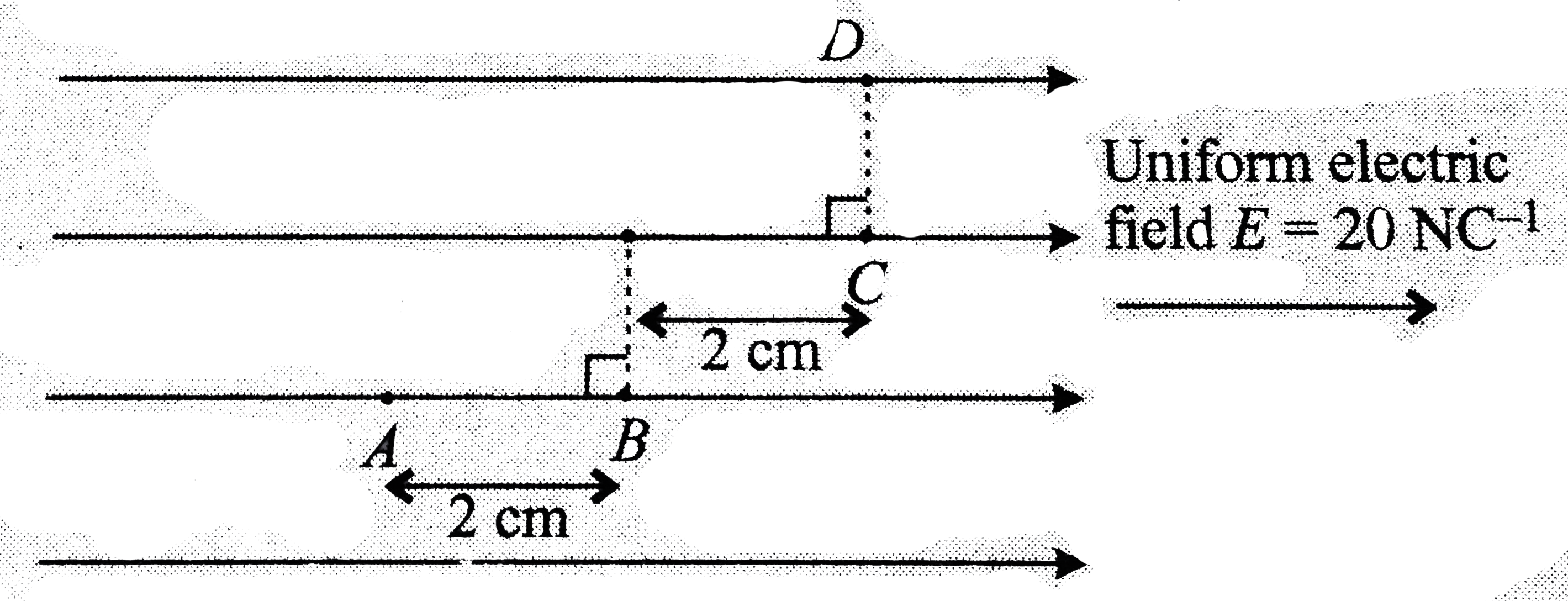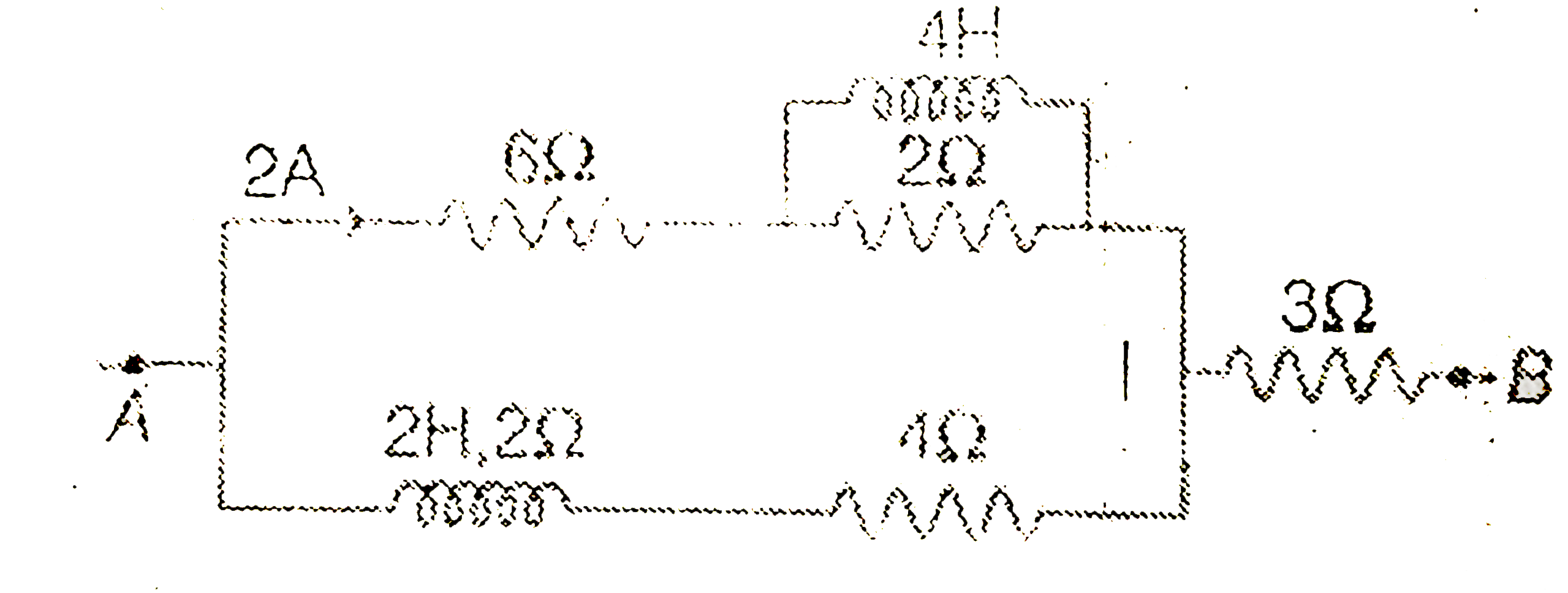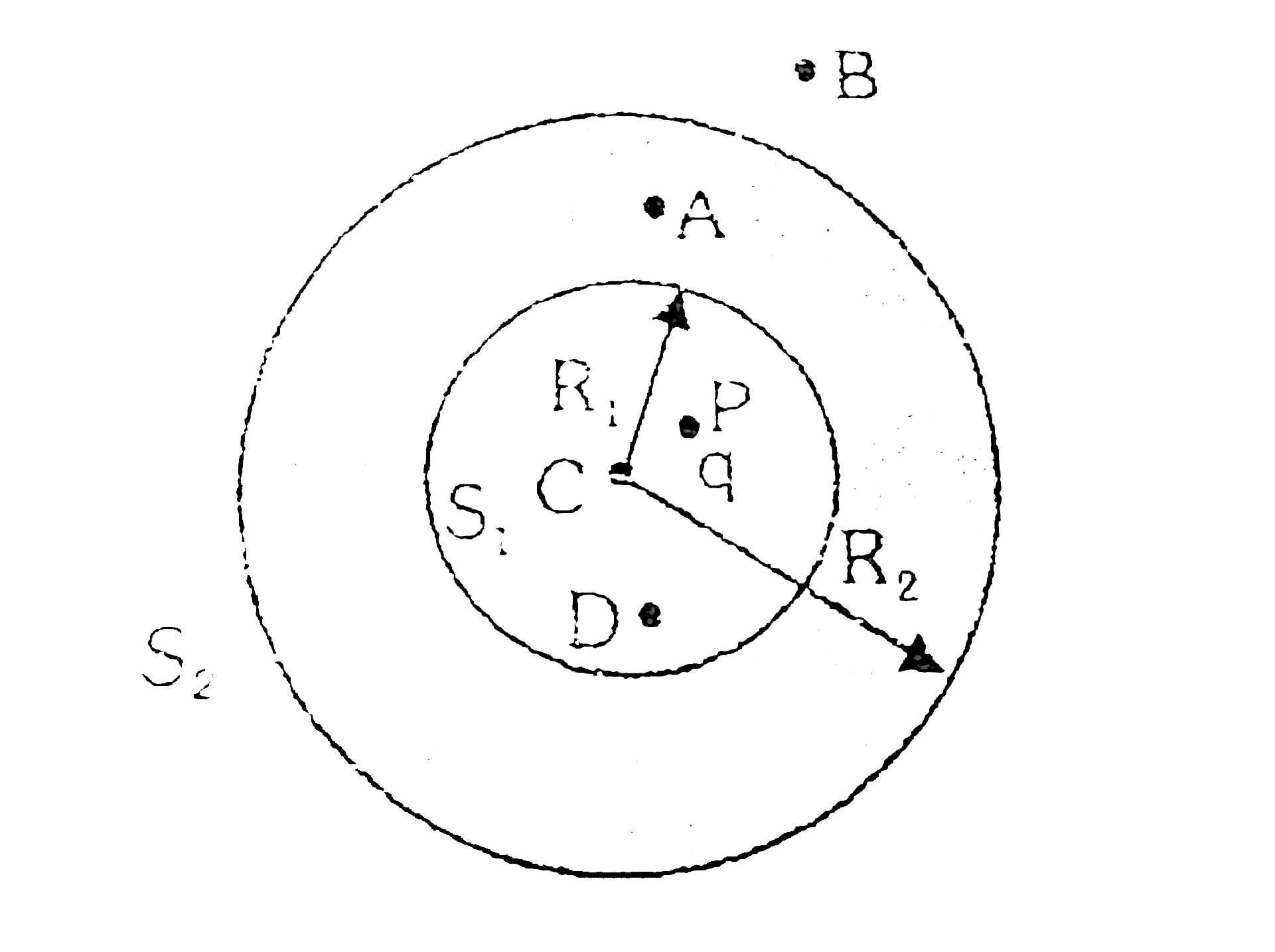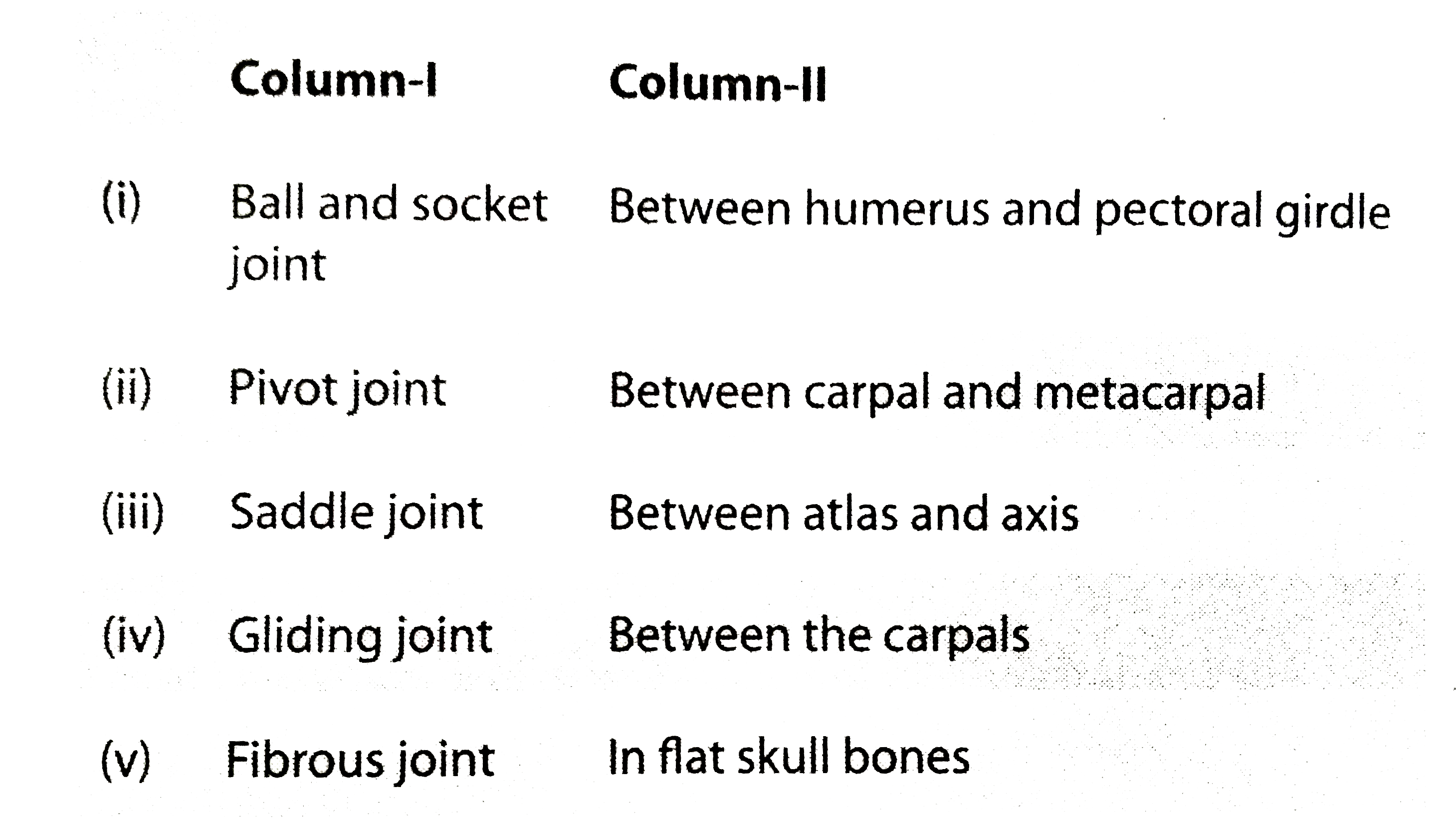Find out following

(i) VA−VB (ii) VB−VC (iii) VC−VA (iv) VD−VC
(v) VA−VD (vi) Arrange the order of potential for points A, B, C and D.
(i) |ΔVAB|=Ed=20×2×10−2=0.4 So, VA−VB=0.4V
because in the direction of electric field potential always decreases.
(ii) |ΔVBC|=Ed=20×2×10−2=0.4 so, VB−VC=0.4V
(iii) |ΔVCA|=Ed=20×4×10−2=0.8 so, VC−VA=−0.8V
because In the direction of electric field potential always decreases.
(iv) |ΔVDC|=Ed=20×0=0 so, VD−VC=0
because the effective distance D and C is zero.
(v) |ΔVAD|=Ed=20×4×10−2=0.8 so, VA−VD=0.8V
because In the direction of electric field potential always decreases.
(vi) The order of potential is : VA>VB>VC=VD.
Topper's Solved these Questions
- BOOK - RESONANCE ENGLISHCHAPTER - ELECTROSTATICSEXERCISE - Problems22videos
ELECTROSTATICS
- BOOK - RESONANCE ENGLISHCHAPTER - ELECTROSTATICSEXERCISE - Exercise-1 Section (A)9videos
ELECTROSTATICS
- BOOK - RESONANCE ENGLISHCHAPTER - ELECTROMAGNETIC INDUCTIONEXERCISE - A.l.P19videos
ELECTROMAGNETIC INDUCTION
- BOOK - RESONANCE ENGLISHCHAPTER - EXPERIMENTAL PHYSICSEXERCISE - PART -II10videos
EXPERIMENTAL PHYSICS
Similar Questions
Find out the following
a. VA−VB
b. VB−VC
c. VC−VA
d. VD−VC
e. VA−VD
f. Arrange the order of potential for points (A, B,C and D).
 .View Solution
.View SolutionIn the given circuit find the |VA−VB| where VA,VB are electric potentials at the points A and B.
 View Solution
View SolutionFind VA−VB in steady state
 View Solution
View SolutionAn unchanged conductor of inner radius R1 and outer radius R2 contains a point charge q placed at point P (not at the centre) as shown in figure? Find out the following:

(i) VC (ii) VA (iii) VB (iv) EA (v) EB
(vi) force on charge Q if it is placed at BView SolutionIn uniform electric field, E=10NC−1 as shown in figure, find
(i) VA−VB
(ii) VB−VC.View SolutionWhich of the following is/are not carrectly mathched pairs ?

(a) (ii) and (iii)
(b) (i) and (iv)
(c) (v) only
(d) (ii) onlyView SolutionConsider
 .
.
The potential difference VA−VB is.View SolutionIf the above question, the potential has correct relations as given=
A. VA>VB>VC>VD
B. VA>VB≥VC>VD
C. VD=VC=VB=VA
D. VC<VB>VA>VDView SolutionIn the uniform electric field shown in figure, find :
a. VA−VD
b. VA−VC
c. VB−VD
d. VC−VD
 View Solution
View SolutionTwo capacitors C1 and C2 in a circuit are joined as shown. If VA=V1,VB=V2, the potential of point P is
 View Solution
View Solution

